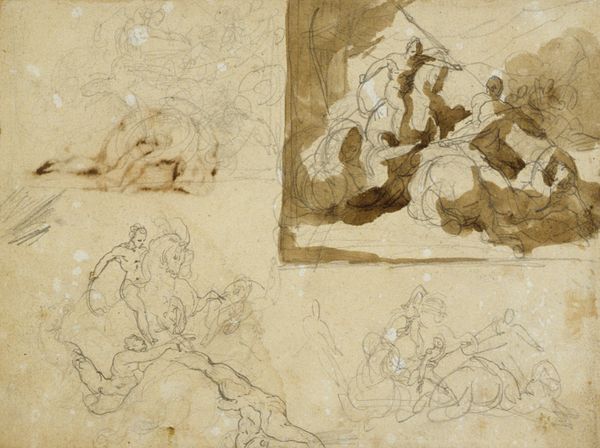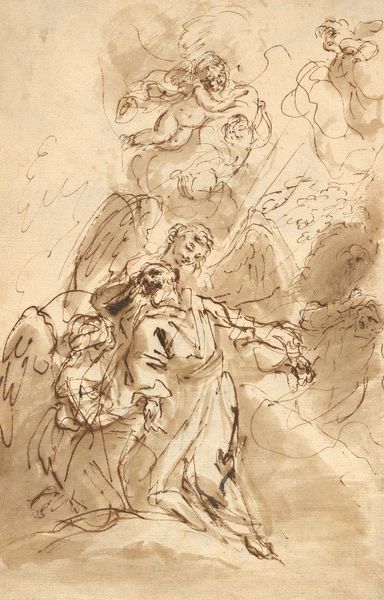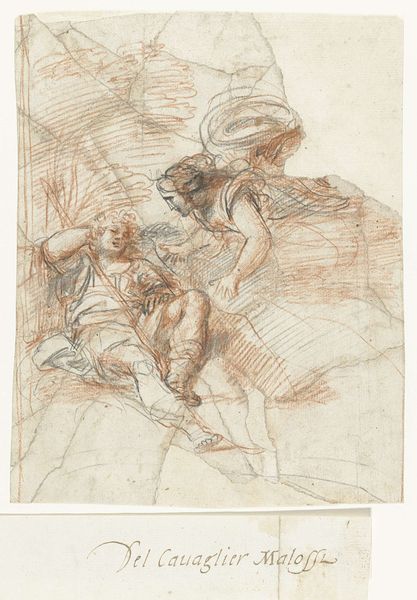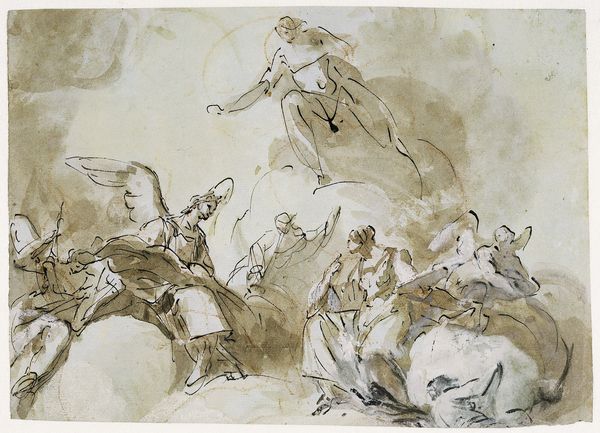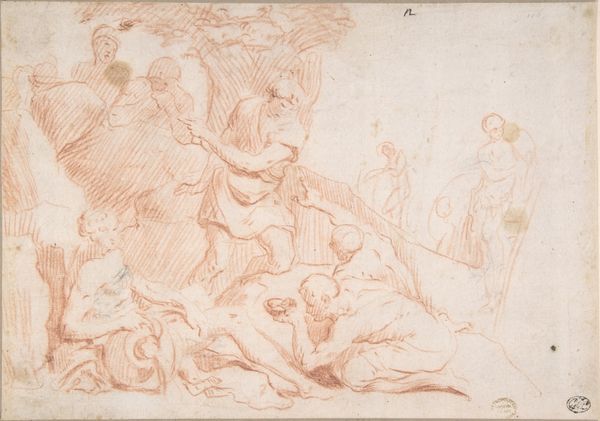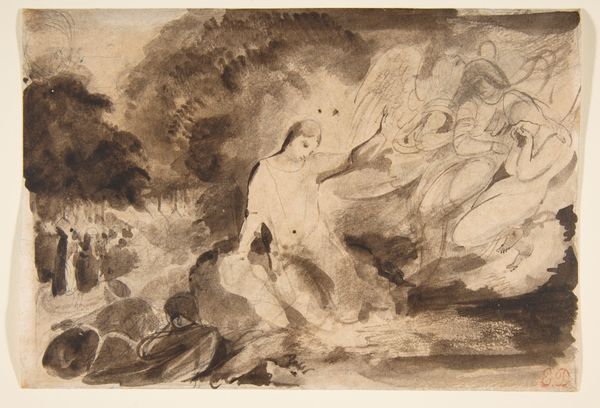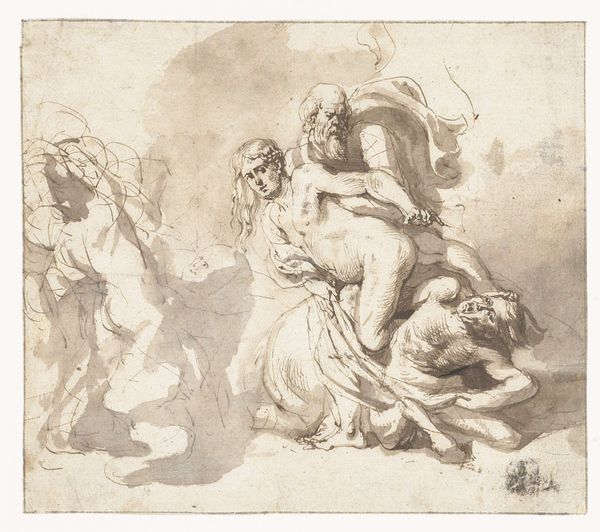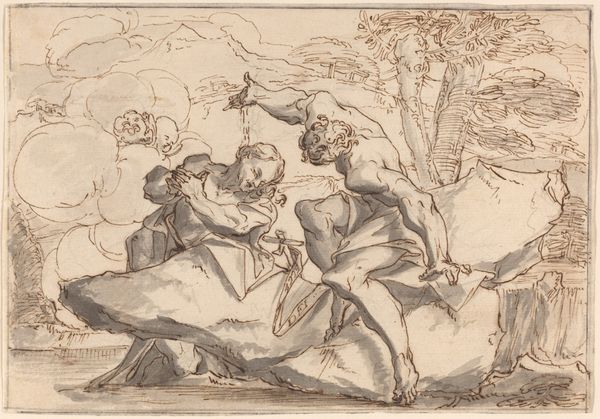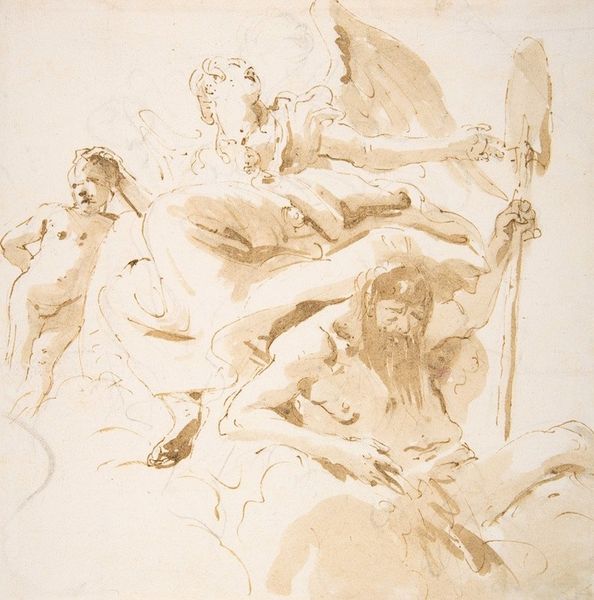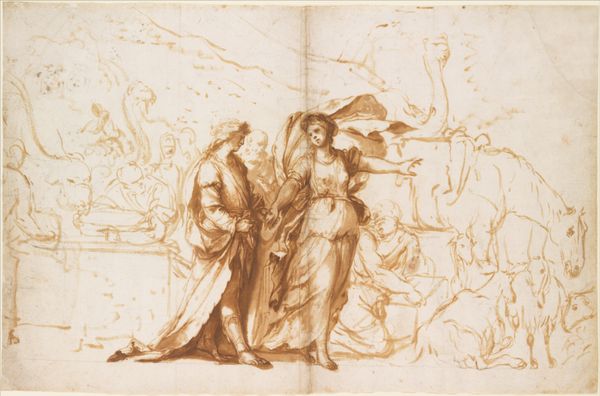
Dimensions: 7 1/4 x 9 3/4 in. (18.42 x 24.77 cm) (image)
Copyright: Public Domain
Editor: Here we have Domenico Mondo’s "Studies for Arch Figures (recto and verso)," created around 1785 using pen and ink. There's a fluidity and grace to the figures that I find compelling. What can you tell me about this work, seeing it through the lens of its historical moment? Curator: Well, it's fascinating how Mondo synthesizes Baroque dynamism with nascent Neoclassical ideals here. Look at the subject matter - these idealized figures. It echoes the era's obsession with classical antiquity, fueled by archaeological discoveries and the Enlightenment's emphasis on reason and order. Yet, the energetic ink strokes and dramatic compositions still cling to the theatricality of the Baroque. Editor: So, it's a visual representation of societal shifts? How do you think it was received by the public back then? Curator: Absolutely. Considering the rise of academies and art criticism, works like these became subjects of intense debate. Did they adhere to the correct classical forms? Were they morally uplifting? These drawings likely served as preparatory sketches for larger history paintings, which were considered the highest form of art because of their potential to instill civic virtue. The *idea* was that public virtue could be encouraged through imagery. Editor: That tension between established style and emerging ideals must have shaped art's trajectory. Thanks for the insightful analysis! Curator: My pleasure. Seeing art as a reflection of these forces gives a richer understanding. I find it compelling to remember that artwork’s public role was to form upstanding citizens, so seeing these stylistic transitions within the works is always a fun moment.
Comments
minneapolisinstituteofart almost 2 years ago
⋮
Domenico Mondo's calligraphic pen work is on full display here. In this two-sided sketch, the artist invented figures to adorn an arch. He continued his studies on the back of the sheet, efficiently tracing the dark outlines of one of the figures from the front. He then worked up this new figural study in charcoal, this time showing the figure holding a book rather than crossing his arms. When viewed just right, the sheet's scrollwork watermark is visible. This identifies the paper as coming from Palermo, not far from Domenico's hometown of Naples. Also apparent are some small losses in the paper, where the corrosive iron gall ink has eaten through.
Join the conversation
Join millions of artists and users on Artera today and experience the ultimate creative platform.

